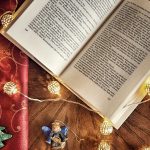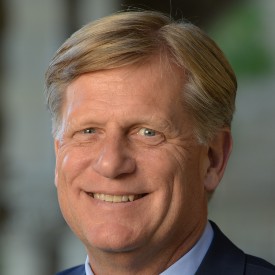Melinda Briana Epler is the Founder and CEO of Change Catalyst. She has over 25 years of experience as a diversity, equity, and inclusion speaker, advisor, and changemaker. Her company specializes in advising tech companies on how to address these culture issues within their organizations. Her book offers practical advice on how those of us in the position to become allies can inspire and enact change.
Below, Melinda shares 5 key insights from her new book, How to Be an Ally: Actions You Can Take for a Stronger, Happier Workplace. Listen to the audio version—read by Melinda herself—in the Next Big Idea App.
1. There’s no magic wand that creates diversity, equity, and inclusion.
Change happens one person at a time, one action at a time, one word at a time. It’s human nature to want quick solutions. Companies new to diversity, equity, and inclusion often believe that one training will fix their problems, but that isn’t how change works. There is no training that magically fixes lack of diversity, inequity, and exclusion.
We have a tendency to believe that technology can fix most problems in our workplaces, but there is no technology that magically fixes this either. There are some technology solutions that address pieces of the diversity and inclusion puzzle, such as training that teaches specific solutions to creating more equitable systems, processes, language, and structures. However, the real change happens when each of us becomes part of the solution.
“Change happens one person at a time, one action at a time, one word at a time.”
That’s where allyship comes in: you and me, leading with empathy, changing how we do what we do, how we make people feel, working together to recognize and correct deep imbalances in opportunity that began centuries ago and continue today. As we reach a critical mass of allies, we create stronger and happier workplaces, companies, and industries, together.
2. Allyship is empathy in action.
Allyship is really seeing the person next to us—and the person missing who maybe should be next to us—and first understanding what they’re going through, then helping them succeed and thrive with us. We use our power and influence to create positive change for our colleagues, friends, and neighbors. We recognize when someone isn’t in the room who should be, and we work to get them there.
Allyship is learning by reading, observing, listening, and hearing other people’s lived experiences. Good allies are always learning. Allyship is stepping up and stepping in as an advocate (even sometimes stepping back) so that our colleagues can thrive. Allyship is also leading the change, taking action to correct unfairness and injustice. We remove barriers so that everyone can rise and make sure that no one is unfairly held down.
There are many terms that go hand-in-hand with allyship. Some say we need to go beyond allyship to being comrades, collaborators, co-conspirators, accomplices, and advocates. To me, these are all forms of allyship, and each is important. The work of allyship is not passive—it is active. Allies are not bystanders; allies do the work.
“Allyship is stepping up and stepping in as an advocate (even sometimes stepping back) so that our colleagues can thrive.”
Allyship is not charity; allyship is being a good human. Allyship helps correct and repair centuries of people not being treated equally, create equal access and opportunity, build better companies, and establish healthier, happier workplaces and communities for us all.
3. We all harm people without intending to, but we can change that.
People have been harmed throughout history due to oppression, systemic inequities, and cultural marginalization. Much of this harm continues today, and can surface through our individual words, actions, and non-actions. As allies, we must learn the ways we might be harming people without realizing it, acknowledge the impact of this harm, and correct our actions.
Biases are mental patterns or shortcuts that influence our perception about something, someone, or a situation. We learn them from our families, friends, teachers, media, and throughout our culture. While we might not be aware of our biases, they can perpetuate oppression, inequity, and marginalization.
Because they are learned responses, biases can be unlearned. As allies, we must learn to interrupt our unconscious biases by making them visible and becoming deeply conscious of what we say and do. This requires some effort and time to unravel what has been ingrained in our consciousness over our lifetimes, but it gets easier over time.
“While we might not be aware of our biases, they can perpetuate oppression, inequity, and marginalization.”
Biases are the root of many microaggressions—little, everyday slights and insults—usually unintentional, that can make someone feel belittled, disrespected, unheard, unsafe, othered, tokenized, gaslighted, impeded, and/or like they don’t belong. The key is to develop our empathy skills and become intentional so that we recognize the microaggression forming and stop it before it happens.
4. You can create change in your organization, even if your company isn’t ready.
Covert culture change is the best option when leadership or the company culture is not ready to address diversity, equity, and inclusion directly. You can still move the needle in several ways without using those three words at all. I’ve been there, and I know it can be taxing to work in a culture like this, but if you love your work and want to influence change, it’s still possible. A few examples:
- Wellness programs can improve engagement levels, health, and well-being.
- Mindfulness and emotional intelligence programs can improve empathy skills. These can create more empathetic leadership teams, and sometimes even open them up to future conversations about inclusion.
- Leadership development programs can help people with underrepresented identities grow their careers and move into leadership, while improving engagement and belonging.
- Employee resource groups (ERGs) can provide a safe space for people with underrepresented identities to meet people like them and be themselves. Over time, ERGs can gain power and influence in numbers and help demand change in the organization.
- You can also improve diversity, equity, and inclusion by updating processes to be more competitive in your industry: for example, changing hiring and performance review practices to be more inclusive, or adopting inclusive design methods.
“Covert culture change is the best option when leadership or the company culture is not ready to address diversity, equity, and inclusion directly.”
5. You become a good ally one step at a time.
After George Floyd was murdered in 2020, many people realized the need to step up as allies. Many companies are newly focused on diversity, equity, and inclusion. And yet there are lots of questions about what each of us can do. Drawing on an original global study and over 25 years of experience, my book walks you through seven steps for taking action as an ally to correct marginalization and exclusion, and create a stronger, happier workplace as a result:
- Learn, unlearn, and relearn. Learn to recognize historical harm and its intergenerational impact, unlearn biases from history and cultural marginalization, and relearn from new perspectives.
- Do no harm—understand and correct our biases. Work to change your behaviors and actions to avoid unintentional harm.
- Recognize and overcome microaggressions. Develop awareness and empathy skills to identify and eliminate these toxic behaviors.
- Advocate for people. Step up and advocate in small, everyday ways that can make big differences in people’s lives.
- Stand up for what’s right. Intervene to stop microaggressions and support people who have been harmed.
- Lead the change. When you’re ready, take action to lead change in your work, on your team(s), and in your workplace.
- Transform your organization, industry, and society. Address biases and inequities in your company and in the broader world.
To listen to the audio version read by author Melinda Briana Epler, download the Next Big Idea App today:






























